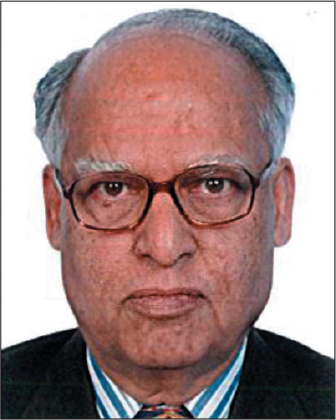 By P.N. Bhandari, Former Chairman, Rajasthan State Electricity Board, and Advocate, Rajasthan High Court
By P.N. Bhandari, Former Chairman, Rajasthan State Electricity Board, and Advocate, Rajasthan High Court
The long-awaited amendments to the Electricity Act, 2003 have unfortunately been stuck in Parliament due to the diffidence of the Power Ministry in the absence of a broad political consensus. The amendment bill was not lucky enough to be pushed through during the usual uproar in the House, as has happened with many other bills. The states, with their singularly tubular and shortsighted approach, are opposing certain much-needed amendments such as a central level selection committee for the state commissions.
In dealing with such highly contentious issues, strategy is more important than the logic and rationality behind the proposed amendments. It is not necessary that the entire Electricity Act has to be amended in a single sweep. Even the Constitution of India has been amended 105 times, and the last amendment is yet to come.
Let the Power Ministry introduce non-controversial items through an Ordinance. The dispute resolution mechanism in the Power Sector is in a total mess. Most of the regulatory commissions have failed to deliver the goods. The Electricity Act had visualised the regulatory commissions, with all the trappings of a court, as fiercely independent authorities, with complete distancing from the governments. The regulatory commission is a constitutional authority. Minus the procedural delays of the civil courts, the regulatory commissions were supposed to be mirror images of the courts. In one of my earlier articles published in Power Line, I had lamented thus:
“But over a period of time, most of the state commissions have virtually degenerated and lost their independence. While constituting the state commissions, the Electricity Act had envisaged a level playing field for all the stakeholders, but soon these lofty assumptions were dashed to the ground. The state governments were pulling the strings of the state commissions and consequently the orders of a large number of state commissions smacked of a total tilt towards the state power companies.”
Uninterrupted, adequate and reliable supply of electricity is the sine qua non for a flourishing economy. The promotion of renewable energy has to be pursued aggressively and relentlessly, but many of the discoms have not hesitated in rescinding long-term power purchase agreements (PPAs) pertaining to wind and solar energy on spurious grounds. Such arbitrary and patently illegal orders have raised international reverberations. In a country governed by the rule of law, this is unthinkable, but, lamentably, some of the regulatory commissions have not hesitated to endorse such arbitrary and patently illegal decisions.
The dispute resolution mechanism in the power sector is in a total mess. Most of the regulatory commissions have failed to deliver the goods.
Section 42 of the Electricity Act, 2003 guarantees the right to procure electricity through open access. Initially, the response was very encouraging and the power exchanges did a commendable job in providing electricity at much lower rates. However, the discoms were uncomfortable with the growth of open access, as it was hurting their revenue. Hence, they created a plethora of impediments against open access operations. What is most distressing is that through the regulations, the commissions have blessed these stumbling blocks against open access, in flagrant violation of Section 42 of the Electricity Act. Unfortunately, regulations cannot be challenged before the Appellate Tribunal for Electricity (APTEL), and the high courts face a huge pendency, hence, no prompt relief can be expected from the high courts in such matters.
The orders of the judicial courts are generally respected, not because they are always right but because of their stellar independence. The public image of the courts has always soared high because they are seen to deliver justice without any fear or favour. Unfortunately, the commissions, which should have followed the rich traditions of the judiciary, have not been able to come up to those high expectations.
Ideally, the national-level selection committee envisaged in the draft amendments could have dramatically checked this rot. Under Section 84 of the Electricity Act, 2003, the three-member selection committee for the state commissions is headed by a retired judge of the high court, who is picked up by the state government. Of the two other members, one is the chief secretary. The other member could be the chairperson of either the Central Electricity Authority (CEA) or the Central Electricity Regulatory Commission (CERC). In practice often, the government chooses an accommodating judge, who literally endorses the names suggested by the chief secretary. Regrettably, due to the flawed composition of the selection committee, it has largely become a rubber stamp of the state government. The government nominee dominates, and in the majority of cases, the committee meekly endorses the names suggested by the chief secretary.
Inordinate delays in filling up vacancies and the consequent delays in the disposal of appeals have sounded the death knell of the dispute resolution mechanism.
A minor amendment to Section 85(1)(c) of the Electricity Act can ensure a significantly effective composition of the selection committee. The word “or” in Section 85(1)(c) could be deleted. Instead of either the chairperson of the CEA or the chairperson of the CERC being appointed as members, both should be on the selection committee. This innocuous change would ensure a more balanced composition of the selection committee. With two national-level members, the chief secretary may not be able to unilaterally force the government’s choice.
In spite of its undoubted independence and high acumen, APTEL has virtually collapsed under the sheer load of appeals. Inordinate delays in filling up vacancies and the consequent delays in the disposal of appeals have sounded the death knell of the dispute resolution mechanism.
Looking at the huge number of pending appeals, it is clear that the present strength of the Tribunal – two judicial members (including the chairperson) and three technical members (including one from P&G) – is woefully inadequate. To add insult to injury, even these posts have often remained vacant for very long spells.
 Consequently, instead of two benches, only a single bench has remained functional for months together. On the day the chairperson or a member is appointed, it is known when he or she will superannuate. Why cannot the Power Ministry set the selection process in motion well in time?
Consequently, instead of two benches, only a single bench has remained functional for months together. On the day the chairperson or a member is appointed, it is known when he or she will superannuate. Why cannot the Power Ministry set the selection process in motion well in time?
Appeals filed way back in 2015 are still languishing before APTEL. Lately, the Government of India (GoI) has been making Herculean efforts to raise the country’s world ranking in the “ease of doing business”. India’s ranking has consistently remained low, among other reasons, due to the never-ending delays in litigation. No homeopathic doses will work. We need major surgery.
In every country, electricity is the prime mover of all industrial growth and activity. But perhaps it has escaped the attention of the GoI that such inordinate delays in filling up vacancies and the consequent delays in the disposal of appeals sound the very death knell of the dispute resolution mechanism. In addition to the existing two benches, at least four new benches should be created for a few years to cope with the staggering backlog. Once the pendency reaches a reasonable level, the number of benches could be gradually reduced by not filling up the vacancies. If one has to cross a ditch, one cannot proceed step by step. It has to be a quantum jump. The same holds good for clearing the crushing backlog of appeals.
